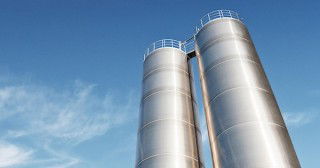As CO2 reduction targets approach, cement plants of the future will need to have a well-defined fuel strategy in place. As part of a series of articles on cement plants of the future, Kline Consulting looks at the most widely available alternative fuel sources and discusses what impact they may have on a plant’s design and its chosen business model. By John Kline & Charles Kline, Kline Consulting, USA.
There are three widely used levers for reducing the carbon footprint from cement manufacture: clinker substitution, energy efficiency and the use of biomass or biogenic fuels for combustion. Each plays a role in reducing CO2 emissions with varying impact. All three levers and more will be required to reach even modest CO2 reduction targets. Clinker substitution may be the lever with the most potential and was covered in the first article of this series (p89, ICR November 2013). Energy efficiency will likely be the least effective lever for modern plants with five stage precalciners and will be covered in a future article.
